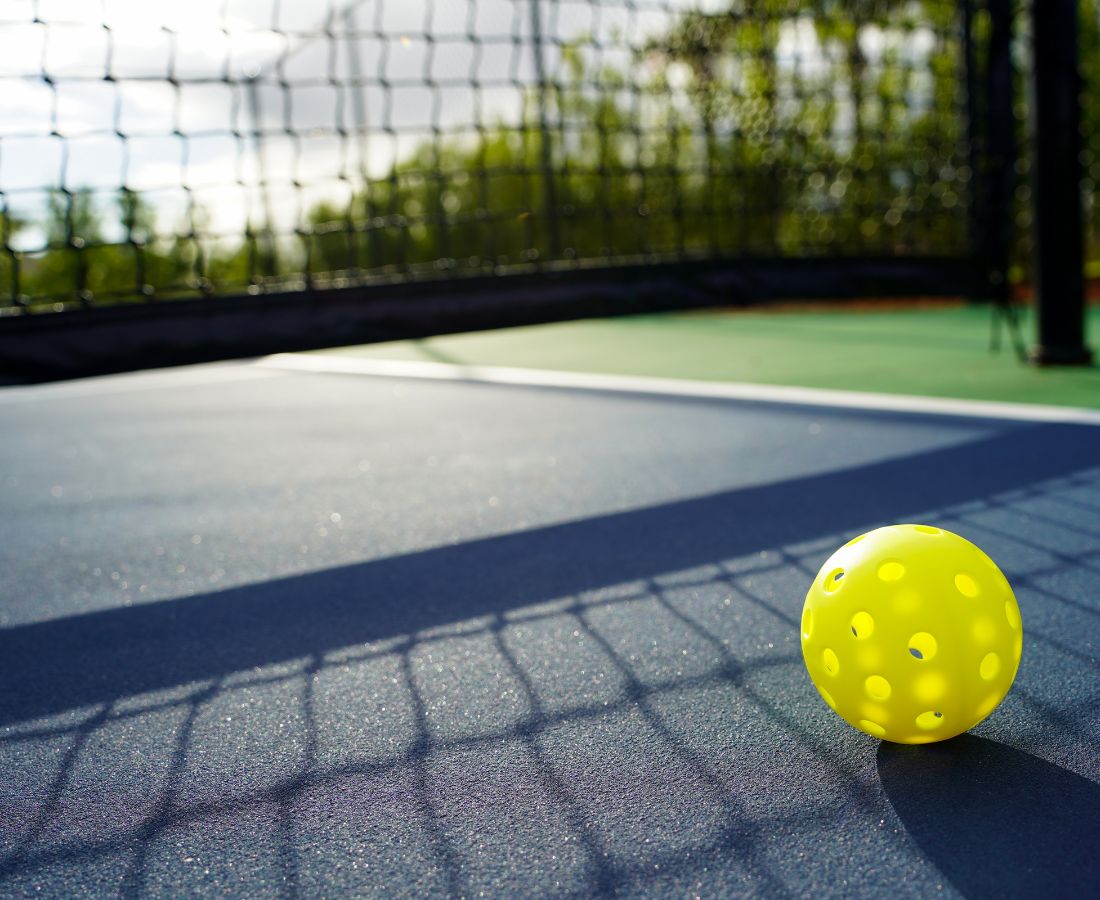“If you can’t stand the heat, get out of the kitchen!”
“I only go into the kitchen during pickleball.”
“Kitchen’s closed!”
If you’ve ever made (or heard) a pickleball joke about staying out of the kitchen, raise your hand – or paddle. The kitchen might be the source of endless jokes and catchy t-shirt slogans, but it’s also an important part of the game.
The rules, though, can be a little bit tricky. How exactly does the pickleball rule book define “momentum?” When are you officially considered “out of the kitchen” and eligible to volley again? If you’ve ever wondered about the kitchen rules or experienced a heated on-court debate about them, we’re here to help.
We combed through the pickleball rulebook to get the lowdown on the kitchen. Here’s a closer look at the kitchen and the rules you need to know before you head to the pickleball courts.
What is the Kitchen?
The kitchen is another term for the non-volley zone. The non-volley zone is the rectangular area of the pickleball court on either side of the net. Each non-volley zone is 7 feet long and 20 feet wide. The sidelines and the non-volley line create the boundary for each non-volley zone.
The non-volley zone is exactly what it sounds like — a portion of the court from which you cannot volley. A volley occurs when you hit the pickleball before it bounces.
Why Is the Non-Volley Zone Called the Kitchen?
If you ask pickleball gurus this question, you will likely receive several different answers. Many attribute its unique name to pickleball’s founders. Some others think shuffleboard inspired the term because it also has an off-limits area called the kitchen. Regardless of its origins, both terms are used interchangeably among pickleball players. We’ll call this part of the court “the kitchen” from here out.
Pickleball Kitchen Rules You Need to Know
The rules of pickleball are not overly complicated, but there are several nuances to kitchen play that every player should know and understand. We’re going to break them down one by one.
You Cannot Volley From the Kitchen
Remember, a volley is a shot you hit out of the air. You can volley from anywhere on the pickleball court – except from the kitchen.
When standing in the kitchen, you must let the ball bounce before hitting it over the net.
You Can Step Into the Kitchen
You can enter the kitchen at any time, but it probably won’t benefit your game to camp out there. Technically, you can stand in the kitchen as long as you don’t volley. Instead, you often see players stand just behind the kitchen line, allowing them to move up into the kitchen when necessary, hit a volley, or return a lob from elsewhere on the court.
The Kitchen is Two-Dimensional
Most of the time, confusion about the kitchen centers on this rule. The kitchen is considered two-dimensional, which means it does not extend beyond the playing surface. If any part of your body, clothing, or paddle touches inside the kitchen or the lines of the kitchen while you are volleying, it is a fault. If your partner is in the kitchen and you touch them while volleying outside the kitchen, it is still a fault.
Momentum Matters
Sometimes, you will hit a volley from just outside the kitchen and narrowly avoid stepping on the
kitchen line or into the kitchen. That’s OK – unless your momentum carries you into the kitchen.
The USA Pickleball Official Rulebook defines the act of volleying as “the swing, the follow-through, and the momentum from the action.”
If, for example, you run up to the kitchen line and hit a volley from outside the kitchen, but your
momentum carries you forward so that you step into the kitchen, it is a fault. The momentum from the volley is only over once you stop moving toward the kitchen and have complete balance and control of your body.
Moving In and Out of the Kitchen
If you enter the kitchen for any reason during a rally, you must re-establish yourself outside the kitchen before hitting a volley. Re-establishing yourself means that both of your feet must touch the ground outside of the kitchen before you hit the ball out of the air.
Let’s walk through an example. During a point, your opponent’s dink lands in the kitchen. You run into the kitchen and dink the ball back right after it bounces. You cannot volley until both your feet touch the ground outside the kitchen.
A Serve Cannot Land in the Kitchen
If a serve lands in the kitchen or hits one of the kitchen lines, it is a fault.
Head to the Court with Confidence
Whether you know the kitchen rules like the back of your hand or need a little refresher, we hope this review of the kitchen rules gives you a little more confidence heading into your next match – and that you use your knowledge to cook up a win.



